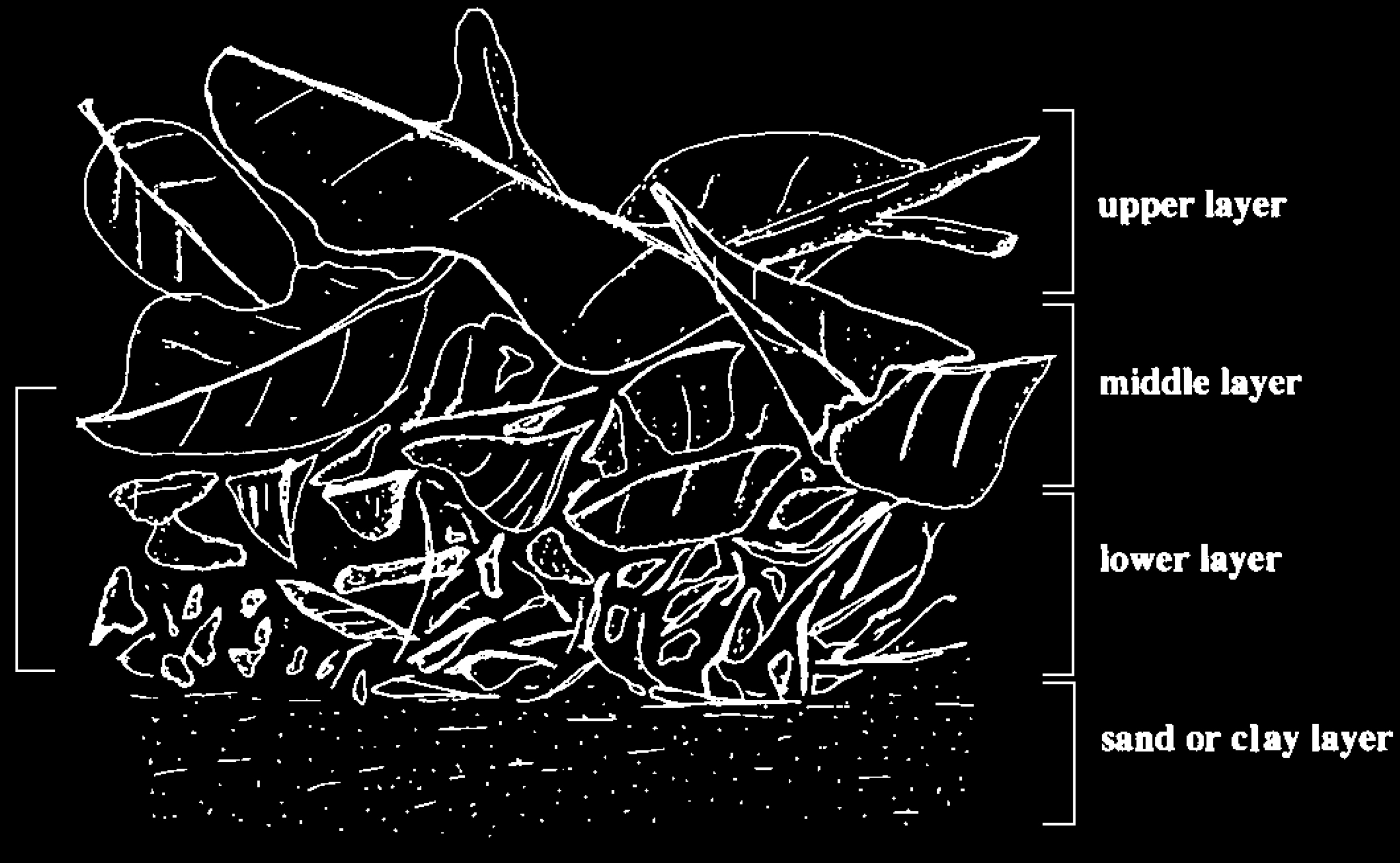Social insects are a major force in land habitats. A mature leaf-cutter ant colony can consume leaf material equal to a weight of a cow every day. Termites are another insect group (related to cockroaches) evolved independently to achieve sociality. Their effects on ecosystems in terms of material and nutrient cycling can rival those of ants.
Higher termites (family Termitidae) feed on a wide variety of plant-based material, including decaying wood, leaf litter, humus, fungi, lichens, dung, and grasses. Non-wood-feeding termites are considered to be evolutionarily recent types of termites.
Workers of most termite species are almost never seen out in the open. They do not forage unprotected; relying on covered runways and soldiers to protect them. Here in this observation a type of termite known as “open processional column termites” (Longipeditermes longipes) form long foraging columns and display interesting behavior.
The Southeast Asian nasute termite Longipeditermes longipes nests underground but forages on the open ground on leaf litter. Its workers carry back food balls in their mandibles while soldiers stand on guard along the marching columns and the foraging patches. If workers feel threatened they hide under the litter. Soldiers face the source of disturbance.
The distribution of Longipeditermes longipes appears to be restricted to the Malay Peninsula and Borneo Island. The identifying features of these termites are black body color, long antennal segments, and long legs of soldiers adapted to move fast and cover larger distances.
Nasute is an entomological term used to define species belonging to the Nasutitermitinae family. Nasute soldiers possess a pointed beak-like snout at the front of their heads, called a nasus. Soldiers of all nasute termites are smaller than the workers.
Open-air foraging strategy is risky. It exposes workers to predation and environmental stresses. However there must be a nutritional benefit that offsets the cost of open-air foraging. Chemical analysis of the food balls carried by termites revealed more nitrogen than wood.
Ingoing and outgoing workers are easily noticeable. Ingoing workers carry food balls. Outgoing workers move in the opposite direction (see the drawing from Miura & Matsumoto 1998). Here in this observation we see fewer outgoing workers. The colony is retreating its foraging column towards the nesting site.
At the foraging site workers spread out on the forest floor and gnaw leaf litter to make food balls. Workers feed on somewhat decayed and moist litter in the lower part of the organic layer covering the forest floor. This layer contains decayed leaves and twigs with fungi or mosses. The layer may contain exposed roots as well.
Soldier polymorphism seems often correlated with task allocation in organization of ant colonies. This is known as polyethism. Does this rule apply to termites?
The soldier caste of L. Lingipeditermes has two sizes. Minor soldiers in certain species of open-air foraging termites were observed to act as scouts in the laboratory simulations. These scout soldiers lead the workers and others soldiers to the food source. Major soldiers act in protecting the core portion of the colony, while minor soldiers are responsible for protecting the nest against predators and initiating a food search.
Soldier-initiated foraging is found in many species of termites belonging to different genera including Rhinotermitinae, Nasutitermitinae and Termitinae. This might be a possible adaptation to reduce predation during the exploratory phase.
Scientists are now curious about the role of pheromones in communication among members of the colony. They want to know whether there are differences among soldiers in initiation of the scouting behavior and the nature of the trail pheromones in termites.




1 Comment